- 翰林提供学术活动、国际课程、科研项目一站式留学背景提升服务!
- 400 888 0080
Edexcel IGCSE Biology 复习笔记 2.2.1 Cell Structure
Edexcel IGCSE Biology 复习笔记 2.2.1 Cell Structure
Cell Structures
- Eukaryotic cells have subcellular structures contained within their cytoplasm
- Each cellular structure carries out a particular function
- Organelles are subcellular ‘compartments’ where specific processes take place within the cell
- Within the cytoplasm, the following organelles are visible in almost all cells (except prokaryotes) when looking at a higher magnification
- Mitochondria (singular: mitochondrion) are organelles found throughout the cytoplasm and are the site of respiration
- Ribosomes are tiny structures that can be free within the cytoplasm or attached to a system of membranes within the cell known as the Endoplasmic Reticulum
- The endoplasmic reticulum studded with ribosomes looks rough under the microscope; this gives rise to its name of Rough Endoplasmic Reticulum (often shortened to R.E.R.)
- Vesicles can also be seen using a higher magnification - these are small circular structures found moving throughout the cytoplasm
Cell Structures & Functions
Cellular Structures & Functions Table
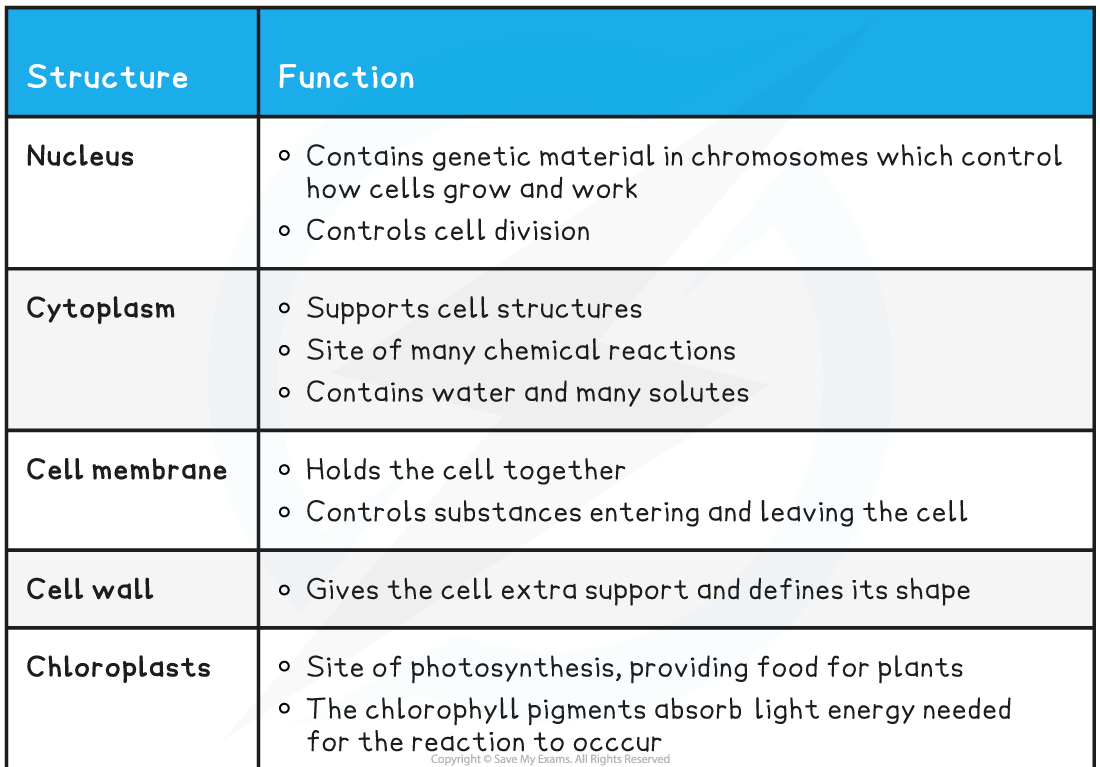
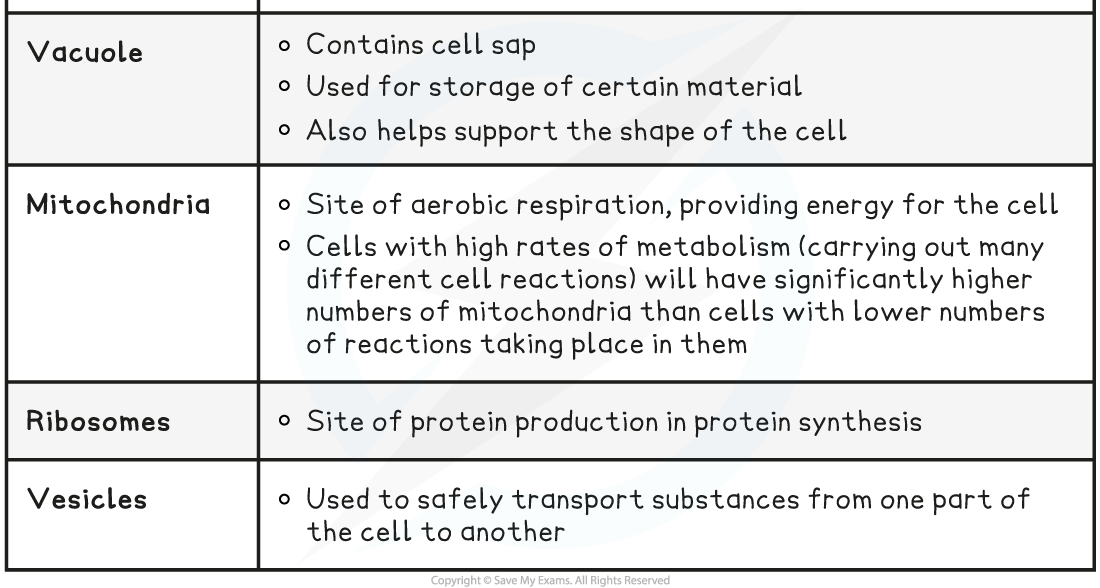
Plant & Animal Cells
- The main subcellular structures in animal cells are:
- The nucleus: contains genetic material
- Cell membranes: controls what enters and leaves the cell
- Mitochondria: site of aerobic respiration
- Ribosomes: site of protein synthesis
- Cytoplasm: chemical reactions take place in this jelly-like substance
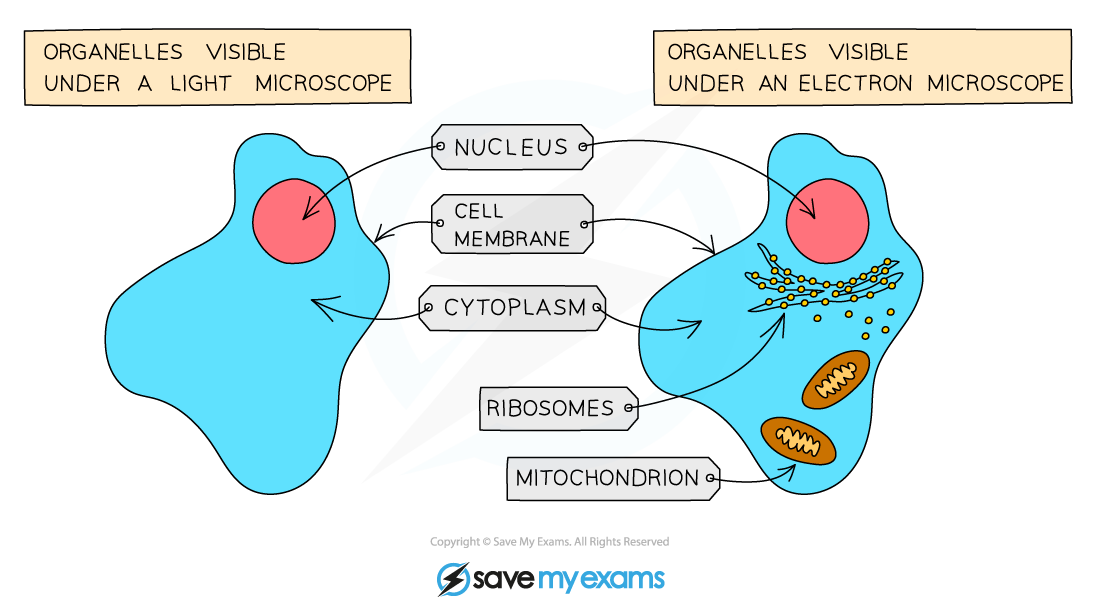
Some cellular structures can only be seen when viewed with an electron microscope
- In addition to the subcellular parts found in animal cells, plant cells have:
- A cell wall made of cellulose: gives the cell shape and protection
- A permanent vacuole filled with cell sap: pushes the cytoplasm against the cell wall, keeping the cell turgid
- Plant cells found in the leaf and stem may also contain chloroplasts: the site of photosynthesis
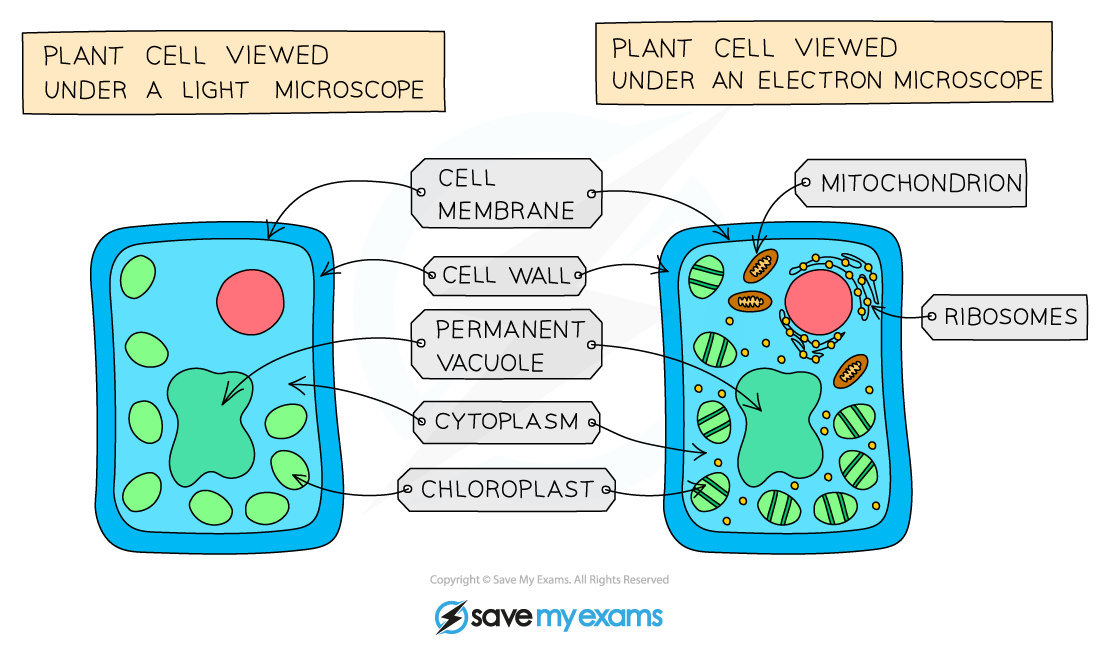
The plant cell shown above contains chloroplasts, so it would be found in the leaves of a plant
Plant Cell Structure & Functions Table
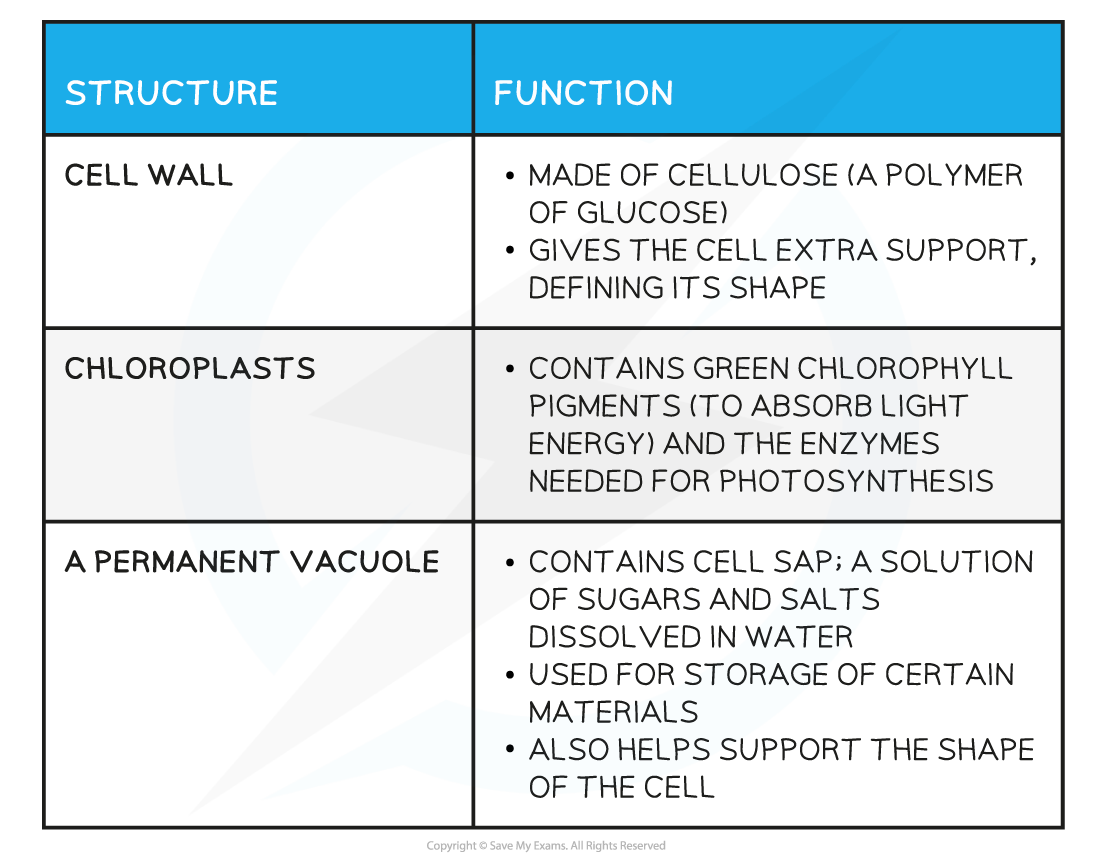
Exam Tip
You need to be able to recognise, draw and interpret images of cells, so practice drawing and labelling animal and plant cells as part of your revision.
转载自savemyexam
站内搜索
竞赛真题免费下载(点击下载)
在线登记
最新发布
© 2024. All Rights Reserved. 沪ICP备2023009024号-1





